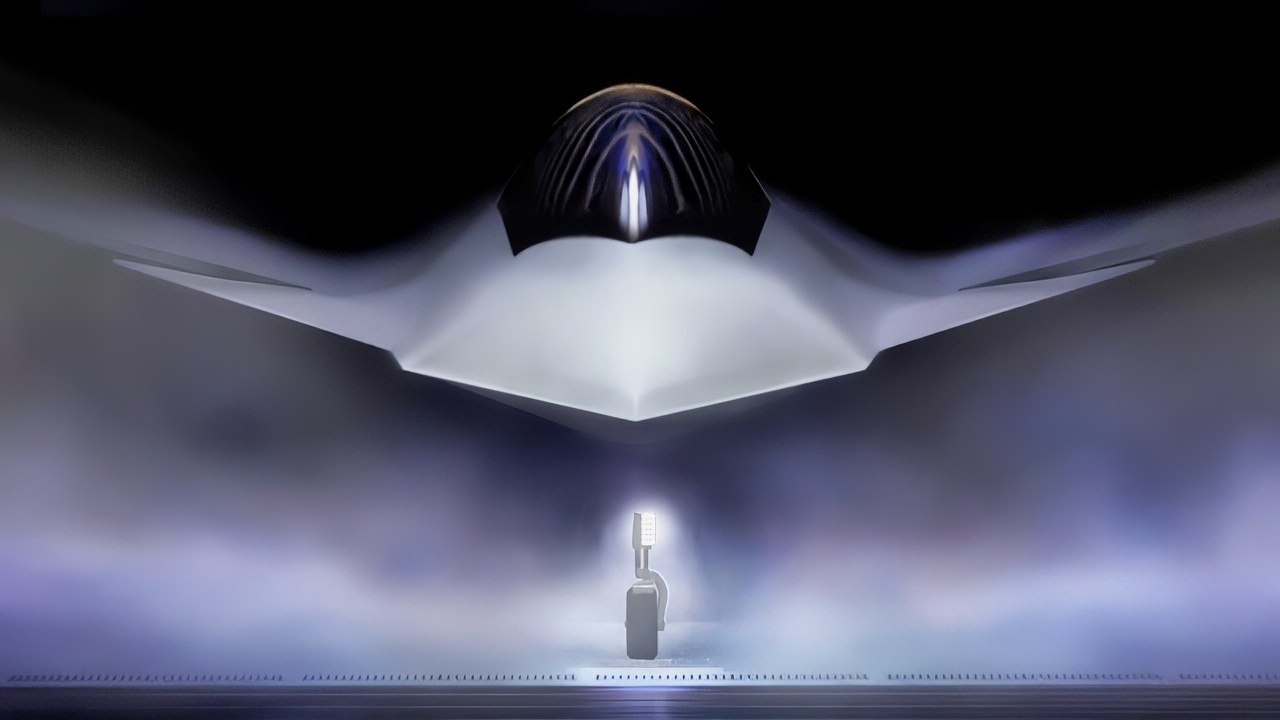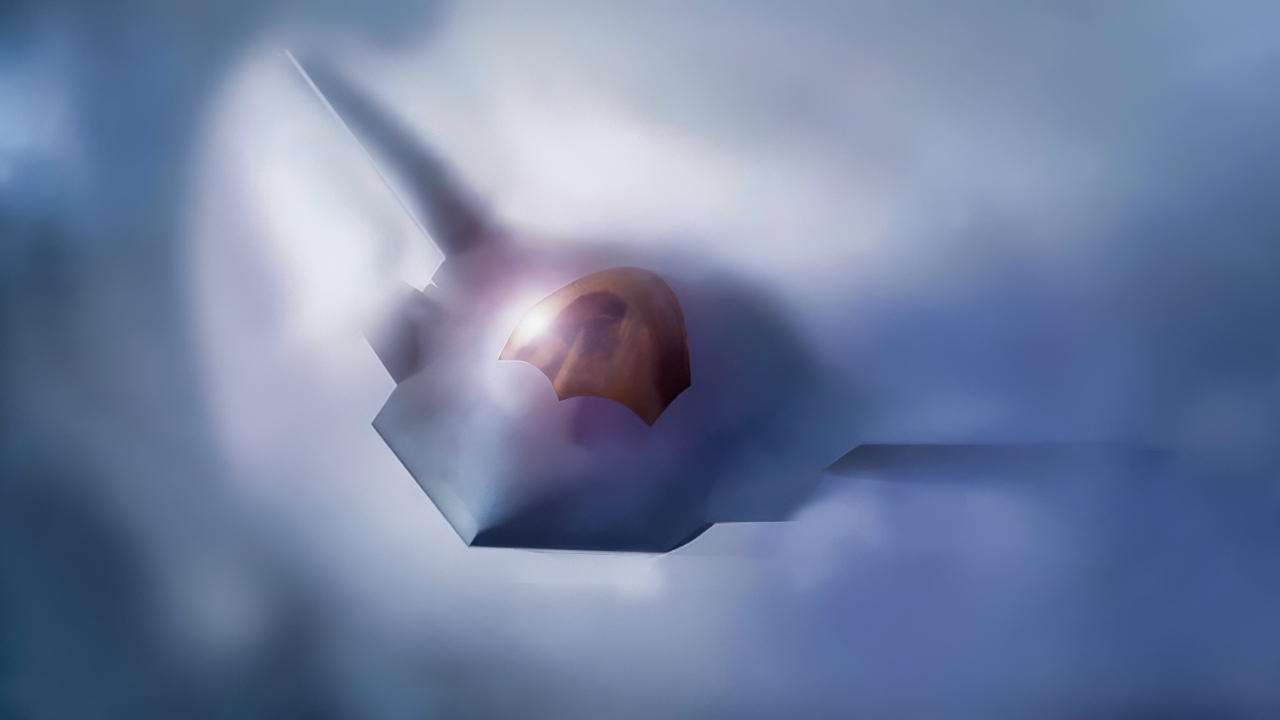Key Points and Summary – The GCAP Tempest is a multinational sixth-generation fighter program from the UK, Japan, and Italy designed to rival America’s F-47 NGAD.
-Built by BAE Systems, Leonardo, and Japanese industry under the “Edgewing” venture, Tempest promises AI-driven avionics, an open architecture, loyal-wingman drones, and a payload potentially double that of the F-35—enough to field future hypersonic weapons.

Tempest Fighter from BAE Systems.
-With twin engines, projected Mach 3 performance, and deeply integrated sensors and EW, GCAP aims for long-term adaptability into the 2040s and 2050s. The real test is political: whether three partners can sustain funding and avoid infighting long enough to field it.
Could the GCAP Tempest Sixth-Generation Fighter Outclass the F-47 NGAD?
The United States leads in stealth flight. It has radar-evading fifth-generation fighter jets, the F-35 Lightning II and the F-22 Raptor. The F-47 sixth-generation fighter is on the way, and the next-generation B-21 Raider bomber is being built quickly. China and Russia have an assortment of stealth fighters as well.

GCAP 6th Generation Fighter.
However, another future stealth airplane is not made by the usual suspects. The Global Combat Air Program fighter, better known as the sixth-generation GCAP or Tempest, is being developed by Japan, Italy, and the United Kingdom to give international customers more options when they are seeking a next-generation combat warbird.
Multinational Fighter Production Is Not Easy
International production efforts are not always successful. Language difficulties and cultural differences among designers and engineers can crimp even the best collaboration efforts. Rivalries can also emerge over which country contributes the most to the final design and production.
These Allies Have the Right Stuff
The GCAP program aims to mitigate these risks by working together closely to keep morale high among all stakeholders. We know there is ample brainpower and engineering prowess among the partners. The British and Japanese brought air forces into vogue during World War Two by producing and fielding numerous technological marvels. The Italians are skillful and creative high-tech experts, as well; their Formula One race cars are like fighter jets on wheels.
The GCAP’s in-service date isn’t expected until the mid-2030s. But if it is successful, the resulting next-generation fighter could dominate into the 2040s and 2050s thanks to increased survivability and advanced performance.

Shown is a graphical artist rendering of the Next Generation Air Dominance (NGAD) Platform. The rendering highlights the Air Force’s sixth generation fighter, the F-47. The NGAD Platform will bring lethal, next-generation technologies to ensure air superiority for the Joint Force in any conflict. (U.S. Air Force graphic)

Shown is a graphical artist rendering of the Next Generation Air Dominance (NGAD) Platform. The rendering highlights the Air Force’s sixth generation fighter, the F-47. The NGAD Platform will bring lethal, next-generation technologies to ensure air superiority for the Joint Force in any conflict. (U.S. Air Force graphic)
The Joint Venture Has Been Strongly Forged
The airplane is being developed by the UK’s BAE Systems, Italy’s Leonardo, and the Japan Aircraft Industrial Enhancement. These companies are no strangers to defense and will likely create a beautiful and capable airplane. The joint venture will be called “Edgewing,” with each company owning 33.3 percent of equity.
What Makes GCAP Great?
GCAP will make ample use of artificial intelligence in the cockpit and in software systems, data processing power, and advanced weapons controls. Like the F-35, it aims to be a “flying super computer.” The Tempest will replace the fourth-generation Eurofighter Typhoon in service with the British and Italian air forces, as well as Mitsubishi’s F-2 in Japan.
The Tempest will also have long-range and large-weapons payloads but maintain high levels of speed and maneuverability. Engineers want GCAP to double the munitions capacity of the F-35. That would make the Tempest one beastly airplane, and these days, heavy firepower blended with stealth capability is a recipe for success.
The payload for the Tempest could reach 10,000 pounds—enough to outfit the next-generation warbird with the latest hypersonic weapons.
The GCAP is also planned to have an updatable open-systems architecture that will enable it to integrate new technological developments in the coming decades. The Tempest will not soon become obsolete, because it will be upgraded based on lessons learned during combat.
The consortium also plans to give the Tempest a loyal wingman drone. This is an exciting addition and shows that the British, Italians, and Japanese are predicting a world in which manned-unmanned teaming will be the standard. The drones could conduct Intelligence, Surveillance, and Reconnaissance duties, execute Electronic Warfare via jamming, and deliver battle damage assessments.
The Tempest might be one of the larger sixth-generation fighters, with two engines planned to achieve Mach 3 speeds. Its first flight could come as soon as 2027, which means it might get into the air quicker than the F-47 NGAD or the U.S. Navy’s future F/A-XX.
These Are First-Class, Ambitious, and Integrated Tech Packages
The GCAP also may include sensor systems such as the Integrated Sensing and Non-Kinetic Effects and Integrated Communications System for better survivability and situational awareness.
“Tempest has been designed from the very outset to have deeply integrated sensing, effecting and communications to link multiple modes of sensing together,” said Jonathan Smith, vice president of capability and chief technology officer for GCAP, AeroSociety reported.
“It’s a paradigm shift in terms of enabling pilots to make the right decision but to make that right decision more quickly than an adversary, so providing the right information at the right time to enable decisions to be made clearly and correctly, efficiently and rapidly.”
These are all heady goals. The main question is whether the consortium can work together for multiple decades to keep the sixth-generation fighter on the flight line. It is an ambitious project, and infighting would ruin it.
If the collaboration holds strong, the GCAP Tempest could lead one of the best fighter classes in the world.
The skies are bright for the program so far. If it could beat the F-47 NGAD into the air, the world would take notice, and the British, Japanese, and Italians would be turning cartwheels.
About the Author: Brent M. Eastwood
Author of now over 3,000 articles on defense issues, Brent M. Eastwood, PhD is the author of Don’t Turn Your Back On the World: a Conservative Foreign Policy and Humans, Machines, and Data: Future Trends in Warfare plus two other books. Brent was the founder and CEO of a tech firm that predicted world events using artificial intelligence. He served as a legislative fellow for US Senator Tim Scott and advised the senator on defense and foreign policy issues. He has taught at American University, George Washington University, and George Mason University. Brent is a former US Army Infantry officer. He can be followed on X @BMEastwood.
More Military
JASSM: The ‘Stealth’ Cruise Missile That Keeps Russian Generals Up at Night
The Day a B-2 Stealth Bomber Disintegrated on Takeoff
The U.S. Military’s Superpower Muscles Are Getting Old
The Mach 6.7 X-15 ‘Hypersonic Rocket Plane’ Has a Message for the U.S. Air Force










